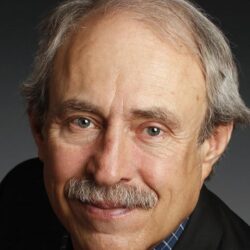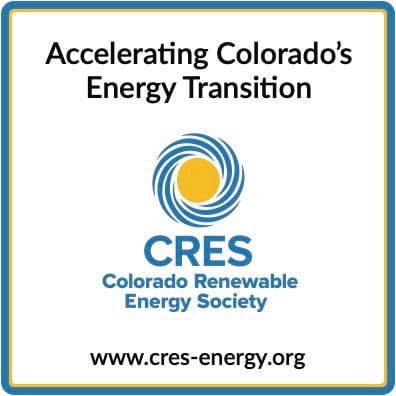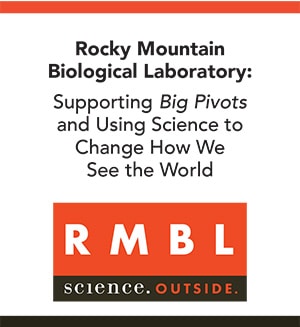“Human Nature” is a serious book that delivers frequent smiles, even some laughs. Plus, you get lessons in Greek mythology and physics, too.
by Allen Best
Quite by accident I came across the marvelous book by Kate Marvel called ‘”Human Nature: Nine Ways to Feel about our Changing Planet.”
I was at a library in Lafayette, Colo., waiting for my companion to emerge from her poetry workshop, when I glanced at the new books section. Curious, I picked this book up. By chance, my eyes landed on a page about the Dust Bowl.
It has been a topic of great interest to me since my grandmother’s remark one evening at supper when I was a six-year-old boy. In farm country, at least in northeastern Colorado, supper then was consumed in the evening. Dinner was served at noon. “I have not seen clouds so dark since the Dust Bowl,” she said. The clouds had indeed been dark. This impressed me.
Marvel delivers a concise explanation of the Dust Bowl and then this: “The greenhouse gases warming the world make heat waves like the ones that caused the Dust Bowl more likely and more severe. A 1930s-level heat wave is roughly 250 percent more likely in today’s hotter world. If those random variations in the atmosphere and oceans that caused the Dust Bowl were to happen again — and there is no reason why they shouldn’t — the resulting heat wave would be much worse now.”
Mining groundwater, she observed, has reduced the risk of dust bowls — but, of course, the Ogallala and other aquifers are being rapidly depleted.
“When the water runs out, even a moderate drought might set off a cycle of warming and drying that leads to a second dust bowl. As the world gets warmer and the sky thirstier, another drought like this is all but inevitable. Records set in the 1930s will soon be broken. The heat is coming. So is the drought. We are not ready for it.”
By the way, Colorado’s all-time heat record of 115 degrees was set in 2019, breaking the previous record set in the 1930s.
What you miss in the above quotes from “Human Nature” is— well, a lot. This book combines a mastery of climate science, a decent knowledge of energy, a deep knowledge of Greek mythology, a very good understanding of history altogether as it applies to climate and civilization, and bits and pieces of personal narrative that humanize our instructor.
Oh, and Marvel has scattered wit and sometimes biting humor throughout. I rarely made it beyond three pages without laughing out loud.
In her chapter titled Anger, for example, Marvel addresses arguments such as those put forth by the Heartland Institute. A “think” tank largely funded by fossil fuel interests, it says that the amount of carbon dioxide in the atmosphere is minuscule, less than 0.05 percent. The intended takeaway: How can this “trace gas” have such an effect on the planet’s climate?
“I do not suggest that these people ingest just a little bit of arsenic to comprehend the effects of trace chemicals,” she responds.
Marvel’s explanations of science are superb. She manages to lay out the principles of physics relevant to climate change in ways that work for me, a guy who struggled in chemistry class.
How, for example, does the millennium-long conveyor belt of hot water and cold water in the Pacific Ocean work and why does it matter? Marvel delivers her explanation by leaning on the story of Poseidon, the Greek Olympian who presided over the seas. In that opening chapter, “Wonder,” other figures from ancient Greek mythology also make appearances in service of explaining the insights of modern science: Cassandra, Apollo, and Zeus, too. Mixed in are explanations of nuclear fusion, The Coriolis effect, and a primer on weather.
Using the organizing principle of human reactions to climate change, other chapters are devoted to Anger, Guilt, Fear, Grief, Surprise, Hope and Love. While a careful scientist who admits a constant hunger for more data, she approaches this humongous topic with human emotions.
So much insight and information deftly and seamlessly packaged? Her chapter “Pride” begins at 40 CE with a legion of Roman soldiers on a beach in northern France. In the next page we learn that half of Earth’s ice-free land is now used for farming. And that by mass, we have twice as much plastic as animals. And that humans have spewed more carbon in the atmosphere than exists in the bodies of every living thing on Earth put together. “Whether we like it or not, it’s our world now.”
What is Plan B? What will we do if we cannot stop emitting greenhouse gases? Marvel examines the ideas of solar radiation management, carbon dioxide removal, and other concepts lumped under the label of geoengineering and explains the challenges and dangers with each. Along the way, because it is relevant, she tells about volcanic eruptions in 1783, 1815 — even going back to 536.
“As a scientist, I’m drawn to technological solutions,” she confides. “My skill set aligns more with planning to block the sun than it does with the hard and confusing work of driving social and political change.”
Alas, the technological solutions look daunting. Blocking sun light, as volcanoes have shown, has consequences. Spraying dust in the atmosphere would almost certainly lower the temperature. But it might change the water cycle in strange and unexpected ways, putting many regions at increased risk of drought, flooding, or both.
A problem of science involving a technological solution, though, requires political consensus. She confides hope and points to the work of the many: electricians who rewire house circuits, accountants who help access clean energy tax credits, and those engineers working on low-carbon cement or battery efficiency. They, she declares, are part of the army “that may yet save the world.”
Notable about this book is the sourcing. Marvel lists material by the pages and the sources, as many authors do nowadays. Sources, almost entirely academic studies, can be found for almost every page. She wasn’t winging this.
Most remarkable about Marvel may be her intellectual journey. She hated math and science as a high school student. Then, at the University of California, Berkeley, she took a class in astronomy and became intrigued by black holes and other cosmic mysteries. One thing led to another — and soon she had a Ph.D. in theoretical physics. She is now in New York City, far from the rock walls of Yosemite that she once climbed, and is associated with Project Drawdown when not tending to two children.
I end this review with an admission. Despite the many praises I have sung about this book, I believe I have fallen short. Perhaps I can offer more testimony. Soon after I started the book I was so persuaded of its strength that I ordered three copies from Alibris, to give out to people. (I snatched all the $15 copies on Alibris, the website for bargain hunters).
After I finished it and started a re-reading, I ordered three more.
Have I persuaded you?
- Was this climate alarmism? - December 18, 2025
- Another step on the Ark River - December 18, 2025
- A conversation with Jonathan Overpeck - December 17, 2025







Ordering three now 😉